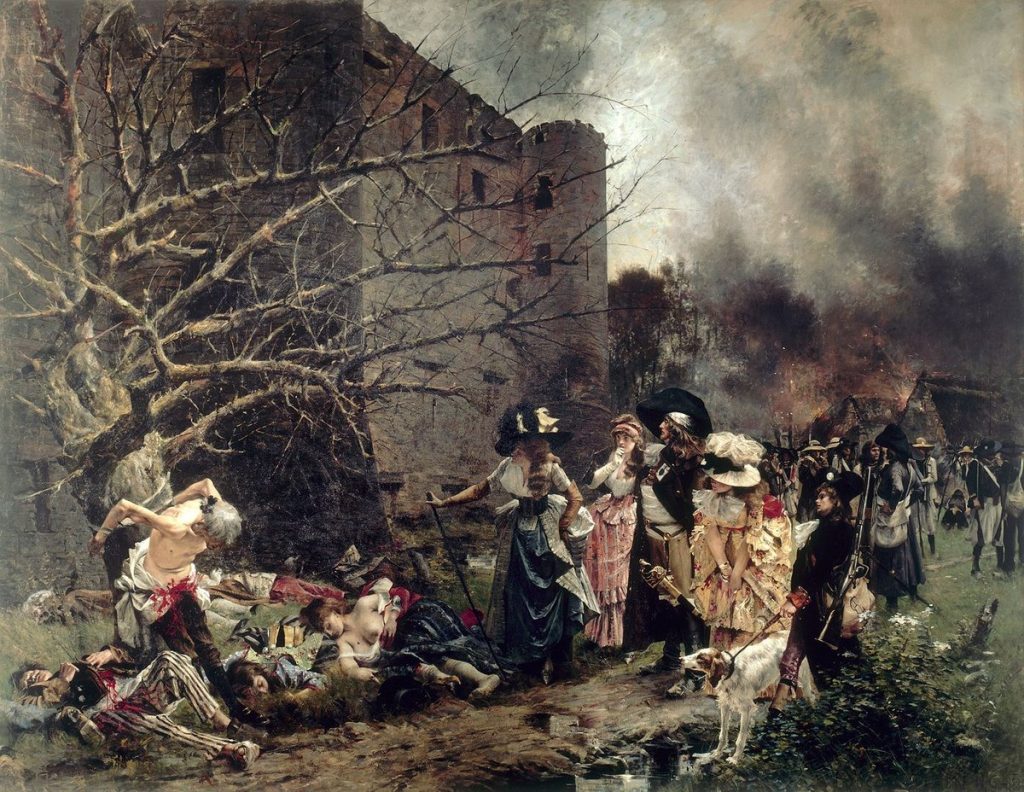
Genocide refers to mass killings of human beings and we all know the unfortunate persecution through the hands of well-known dictator Adolf Hitler in Germany. The prime object of genocide were the jews, poles, gypsies, and other communities that were destructed indiscriminately. No matter how philosophers of jurisprudence try to justify this conduct as a legal system of that time, genocide would classify as a crime against humanity. In this article, we will delve into how the law got codified against genocide in the recent scenario.
Background
In the line with the thought of mass destruction as a crime against the world, a proposal was submitted to the international conference for the unification of criminal law held in Madrid in 1933. This was not accepted. But in 1946, the United Kingdom’s Attorney General and delegate declared that the failure of that proposal made it impossible to punish some of the serious Nazi crimes.
The crime of genocide involves not only the killing but also the prevention of life such as abortions and sterilizations. Moreover, endangering human life and health, the deliberate separation of families, and imposing certain methods to prevent births within the group. The evidence was available in the case of Nuremberg trials for punishing Nazis for the offence of genocide but the international military tribunal interpreted them erroneously and declared that the acts committed before the war were not punishable offences.
But in 1946, a resolution was discussed in the general assembly of the UN to make the atrocities of a government on its own citizen a crime. It was done to make genocide an international crime and it was finally approved in December 1946.
In 1948, it was codified as an independent crime and the convention was known as ‘Convention on the Prevention and Punishment of the Crime of Genocide‘ (Genocide Convention). However, it attracted many critics as a pledge given in the convention ‘to liberate mankind from such an odious scourge’ in order to avoid for the future such ‘great losses on humanity’, this pledge has not been realized.
Instead, the period after 1948 also saw numerous instances of genocidal violence, turning the 20th century Nuremberg War Crime Trial, defendants dock Source: National Archives and Records Administration 148 into what some have called the ‘century of genocide.’ The writer David Rieff therefore once quipped that the pledge of ‘never again’ only could be understood to mean ‘never again will Germans kill Jews in Europe’.
Defining Genocide
Genocide is a hybrid of ‘genos‘ meaning race and ‘cide’ which means killing. Under Article II of the genocide convention, the term ‘Genocide’ is defined as any of the acts in the present Convention, genocide means any of the following acts committed with intent to destroy, in whole or in part, a national, ethnical, racial, or religious group,
- Killing members of the group;
- Causing serious bodily or mental harm to members of the group;
- Deliberately inflicting on the group conditions of life calculated to bring about its physical destruction in whole or in part;
- Imposing measures intended to prevent births within the group;
- Forcibly transferring children of the group to another group.
The Convention of Genocide
The convention was drafted under the UN but is an independent international treaty in itself and not linked to any organization. In the definition of genocide, the word ‘intent‘ refers to not only killing an individual but intending to destroy groups victims belonged to. It is very difficult to prove and the courts rely on the actual events on the ground i.e. speech and writings of the accused.
Genocide can include many acts but it all comes down to whether there was an existence of the intent. The scope of genocide is not exhaustive and limited to national, religious, racial, and ethnic groups and no more. In the past the judges had to face these types of questions: Whether the act of rape can come into genocide?

At first sight, the decision makes immediate sense, as rape obviously causes the victim both mental and physical harm. ‘On further thought, however, the question arises whether the perpetrator indeed commits the rape with the intent to destroy the relevant group as such – as required by the legal definition. Many genocide scholars include sexual violence into their discussions of genocide, but there is still significant room for clarification when applying the legal definition.’
In a case named the Persecutor v. Jean-Paul Akayesu, the chamber stressed upon that the acts of sexual violence was against a particular group of woman in order to destruct them and specifically contributing to the destruction of the group as a whole.
The Convention has been ratified by 149 States (as of January 2018). The International Court of Justice (ICJ) states that whether or not a country has ratified the Convention, it is legally bound by the principle that genocide is a crime prohibited under customary international law. It enjoys jus cogens status which means it is a compelling law and no state is supposed to deviate from them.
A case came into light in the year of 2007, Bosnia and Herzegovina v. Serbia and Montenegro, wherein the ICJ held that Serbia did not commit genocide, but failed both to prevent the genocide committed by Bosnian Serbs at Srebrenica in July 1995 and to punish the perpetrators of the heinous crime. It is to be noted that ICJ does not deal with the criminal accountability of individuals, but looks at the responsibility of states for violating international law.
Conclusion
Even if genocide is brutal and included as a crime, there are still a lot of cases that are recognized as one. ‘In Sudan, the ethnic killings began in 2003 when ethnically Arab militias supported by Sudan’s President Omar Hassan al-Bashir began massacring non-Arab people and destroying their villages. The main victims of these campaigns have been the Fur people, but other small non-Arab groups were also affected. As of 2016 and 2017, violence has increased in Darfur, and many refugee camps for internally displaced Darfuris have been attacked by Arab forces in a continuation of the genocide of the 2000s.’
Such cases are existing abundantly and sadly despite the law against genocide codified, no action is getting taken. The flaw in the whole process is that the effect of punishment and prosecution are existing only on paper, the convention is not able to take care of the acts.
Moreover, the international judiciary moves at a very slow pace and conduct such as genocide requires immediate redress. There are certain alternatives which we can come down to. For instance, States can be encouraged to make a law within their own territory for genocide. Further, Human rights organizations may be most helpful in combating genocide in that many victims of genocide are impoverished, illiterate, and politically powerless groups who cannot speak for themselves.
Editor’s Note
The article sets out the nature, history, and general structure of the crime of genocide and provides a comprehensive analytical commentary of the elements of the crime. It also attempts to discuss the origins of the concept, its criminalization, the applicability of the Convention, its relations with customary international law, historical cases, and other forms of international crimes and how they are different from genocide.